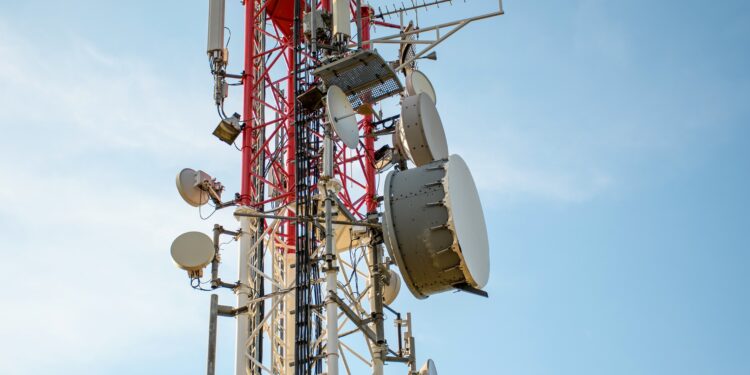Crown Castle International Corp. (NYSE:CCI) is one of the largest providers of shared communications infrastructure in the United States, specializing in owning, operating, and leasing cell towers, small cell networks, and fiber infrastructure that enable wireless connectivity. Established in 1994 and headquartered in Houston, Texas, the company emerged during a pivotal era in telecommunications when the rapid expansion of mobile phone usage created an urgent need for scalable infrastructure. Crown Castle capitalized on this transformation by investing in long-term assets that mobile carriers rely on to deliver coverage and capacity. Over time, the company expanded aggressively through acquisitions and strategic partnerships, amassing tens of thousands of communications sites and establishing itself as a dominant force exclusively focused on the U.S. market.
Unlike global competitors that diversified into emerging markets, Crown Castle built its business around the stability and regulatory clarity of the domestic market, securing long-term leasing agreements with major wireless carriers such as AT&T, Verizon, and T-Mobile. This strategy provided a predictable stream of recurring revenue, as carriers require constant network access and rarely relocate once infrastructure is in place. The company also pioneered early investments in small cell technology and fiber networks to support the rollout of 5G, aiming to position itself at the forefront of next-generation digital infrastructure. This move marked a significant shift from traditional macro towers to denser network systems designed to support increased data usage and ultra-fast connectivity in urban and suburban areas.
Crown Castle’s growth has been driven by long-term contracts with inflation-linked escalators, making it attractive to income-seeking investors. As a real estate investment trust (REIT), Crown Castle distributes a significant portion of its cash flow to shareholders in the form of dividends. Its portfolio today includes over 40,000 cell towers and approximately 115,000 small cell nodes on air or under contract, supported by more than 85,000 route miles of fiber. These assets serve as the backbone for wireless communications across the country, enabling mobile data, internet connectivity, and emerging 5G applications. While the company’s domestic focus has provided defensive stability, it has also tied its fate closely to the capital spending cycles of U.S. carriers, making it heavily sensitive to industry investment trends.
From its beginnings as a pure-play tower company to its current role as a comprehensive provider of wireless infrastructure, Crown Castle has positioned itself as a key beneficiary of the digital economy. Its long-term strategy has centered on enabling the growth of mobile data consumption and supporting the technological evolution from 4G to 5G and beyond. As mobile connectivity becomes increasingly indispensable to businesses, consumers, and public services, Crown Castle’s network assets remain essential components of America’s digital infrastructure, playing a foundational role in connecting people, powering communications, and supporting the continued expansion of wireless technology.
Revenue Breakdown Reveals a Troubling Decline in Core Business Segments
A closer look at segment forecasts underscores the severity of the company’s downturn. Analysts expect site rental revenue—Crown Castle’s largest income source—to fall to $998.97 million, a steep 37.3 percent drop compared to the prior-year quarter. This is particularly concerning because site rental income has historically been the backbone of the company’s stable cash flow and the primary driver of its dividend distributions. The services and other revenue category is also expected to decline to $52.25 million, representing an 11.4 percent decrease. These figures suggest that both recurring rental contracts and discretionary service contracts are weakening simultaneously, signaling reduced carrier activity and declining demand for new infrastructure builds. Investors who once viewed these revenue streams as predictable and defensive must now grapple with the reality that Crown Castle’s customer base—primarily Verizon, AT&T, and T-Mobile—is cutting capital spending, consolidating network infrastructure, and renegotiating contracts at lower rates.

CHECK THIS OUT: NioCorp (NB)’s $1.14B Elk Creek Project Set to Transform U.S. Critical Minerals Supply and Endeavour (EXK) Poised to Double Output With Kolpa and Terronera Expansion.
Margin Compression Highlights Operational Inefficiencies and Growth Challenges
The company’s profitability metrics expose further deterioration. The gross margin for site rentals is expected to plunge to $750.04 million, down from $1.17 billion in the same period last year. This substantial decline reflects shrinking revenue combined with persistent cost pressures that Crown Castle has been unable to offset. The services and other gross margin is also forecast to drop significantly from $31 million to $23.77 million, illustrating reduced profitability across all major operating categories. Crown Castle’s small cell and fiber operations, which were once promoted as high-growth catalysts for the 5G era, have instead become profit drags, with returns falling far short of management’s initial projections. Activist investors have already called for the company to divest parts of its fiber segment due to poor returns on invested capital, highlighting growing concerns about management’s strategic direction.
Rising Costs and Capital Intensity Threaten Dividend Sustainability
Crown Castle’s elevated cost structure further exacerbates its earnings challenges. Analysts project operations costs for services and other to total $27.60 million and operations costs for site rentals to reach $251.59 million. These cost levels, combined with declining revenue, are putting pressure on operating income and reducing the free cash flow available to fund dividends. Although Crown Castle is structured as a REIT and required to distribute a majority of income to shareholders, weakening earnings and declining cash flows are raising the risk of a future dividend cut. Rising interest rates only compound this issue, as the company carries over $20 billion in long-term debt that must be refinanced at significantly higher rates. These factors are creating a scenario where dividend sustainability becomes increasingly uncertain, especially if earnings continue to decline at the current pace.
Earnings Declines Indicate Broader Demand Weakness and Reduced Growth Visibility
The forecasted depreciation, amortization, and accretion expense of $185.14 million further illustrates the capital-intensive nature of Crown Castle’s business. With a shrinking revenue base and contracting margins, the company is facing reduced operating leverage at precisely the time it needs to invest in infrastructure to maintain competitiveness. The domestic market for tower leasing is maturing, and Crown Castle’s lack of international exposure leaves it unable to offset U.S. demand weakness. Competitors like American Tower are benefiting from high growth in emerging markets and diversified revenue streams, while Crown Castle remains vulnerable to a slowing and consolidating U.S. telecom industry.
Conclusion: Crown Castle Faces a Prolonged Downcycle as Core Metrics Deteriorate
The upcoming earnings report is poised to confirm what long-term investors have feared: Crown Castle is not simply facing a short-term earnings dip—it is experiencing a systemic decline in revenue growth, profit margins, and cash flow generation. With EPS expected to drop by more than 43 percent and revenues projected to fall over 36 percent year-over-year, Crown Castle is signaling that its core business model is under significant strain. Declining site rental income, weakening service revenue, deteriorating margins, rising operating costs, and heavy depreciation expenses collectively indicate that the company’s growth story is unraveling. In the face of unfavorable industry dynamics, capital intensity, and dividend sustainability concerns, Crown Castle’s valuation could come under further pressure as investors reassess the company’s long-term earnings power and strategic direction.
CHECK THIS OUT: NioCorp (NB)’s $1.14B Elk Creek Project Set to Transform U.S. Critical Minerals Supply and Endeavour (EXK) Poised to Double Output With Kolpa and Terronera Expansion.






